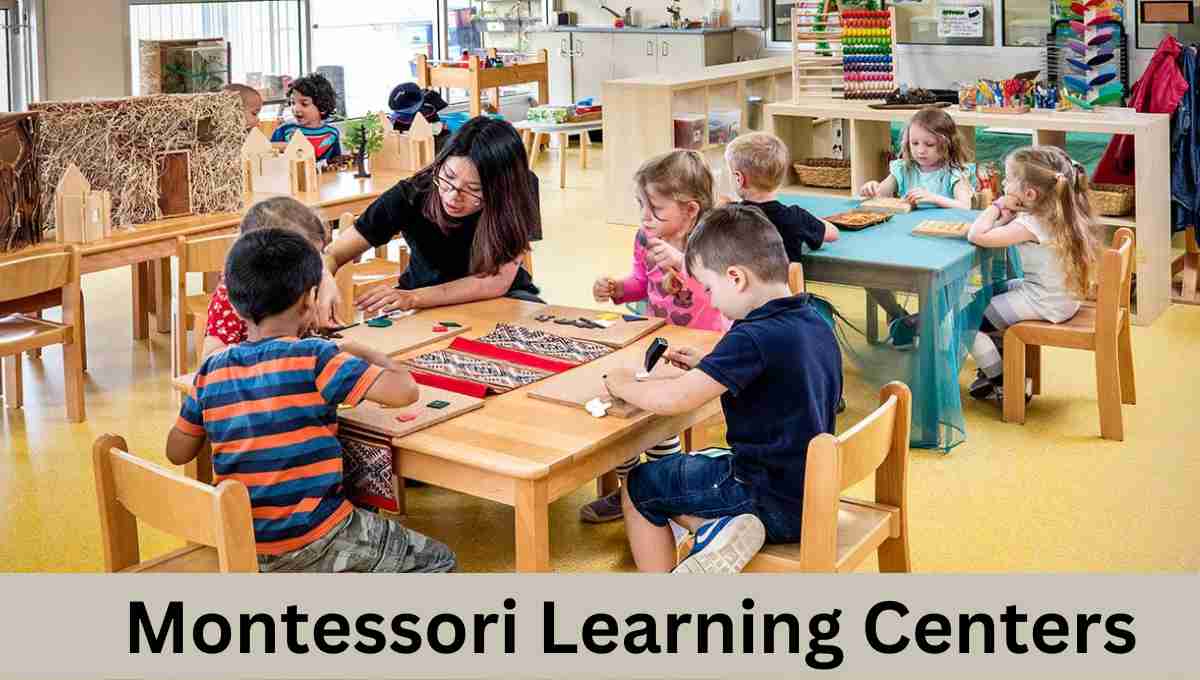What is Montessori Learning Center?
Montessori classroom is divided into five special areas, called Montessori learning centers. Montessori learning centers are equipped with interesting and joyful learning materials. Students visit Montessori learning centers and choose activities according to their interest. The teacher changes these materials according to the student’s needs and interest to keep them motivated.
A Unique Montessori Learning Center Approach
Montessori classrooms are special and different. They have a unique way of teaching. The teacher doesn’t decide what to teach each day. In Montessori Learning Center, kids choose what they want to learn every day. The teacher doesn’t say, “Today, everyone will do math.” Instead, each child picks what they’re interested in. This makes Montessori learning special and unique.
In regular schools, teachers decide what everyone will learn each day. All the students in the class, who are usually the same age, follow a fixed plan. They do the same activities together, like worksheets or reading. All traditional schools teach in the same way.
Montessori Learning Center Cover 5 Aspects of Learning
The following 5 are the different aspects of learning in the Montessori learning Center.
- Practical Life
- Sensorial
- Language
- Mathematics
- Cultural
Practical Life
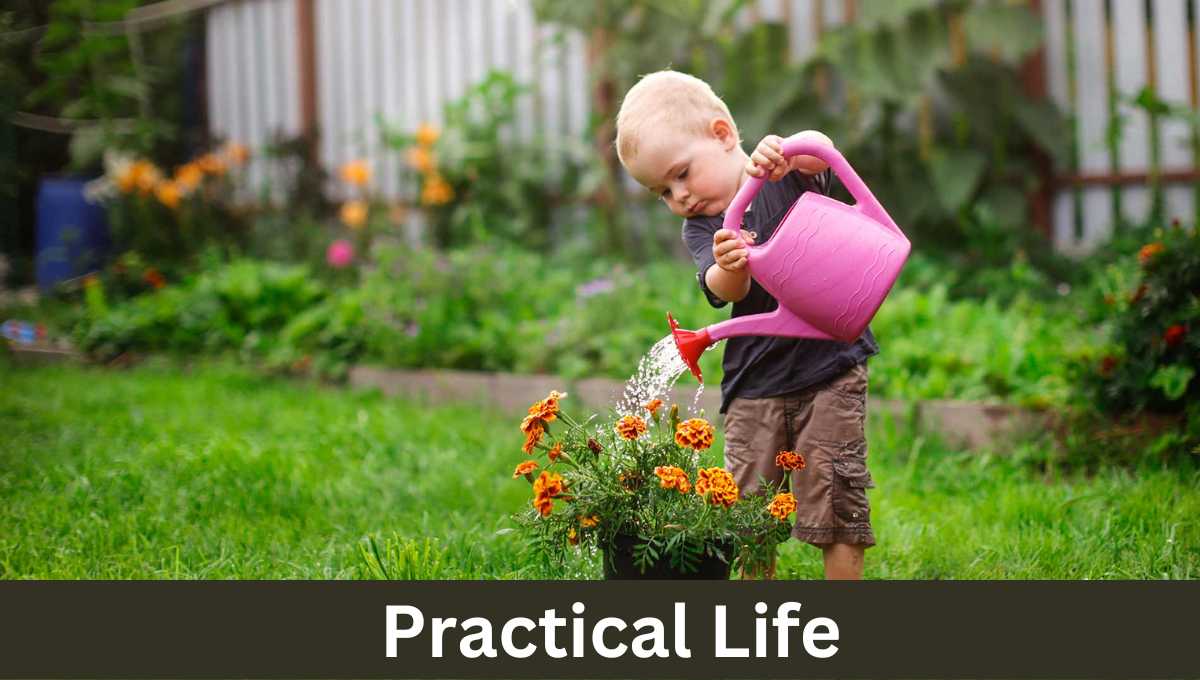
Exercises of Practical exercises (EPL) are those simple daily actions which are normally performed by adults in the environment. These actions are real and are done in real situation. The adults perform these activities for maintaining and restoring proper living conditions. There is no limit to the execution of practical life exercises in Montessori house of children. Children do these EPL exercises during early years in the prepared environment.
Benefits of EPL Exercises
You will understand the importance of EPL exercises by the following ten benefits.
- For independence
- For developing Love for Wok
- For avoiding Personality Disorder
- For developing Love of the “Universe”
- For Perfection of Movement
- For Normalization of the Child
- For Learning to Give and Take Help Gracefully
- For Making World a Better Organized and tidier Place
- For Happiness, Self-Satisfaction and Self Respect
- For passing on Good Work Habits to the Next Generations
Groups of EPL Exercises
EPL exercises are divided into 4 groups.
- Elementary Exercises
- Exercises of Personal Care
- Exercises of Grace and Courtesy
- Exercises of Care of Environment
Elementary Exercises
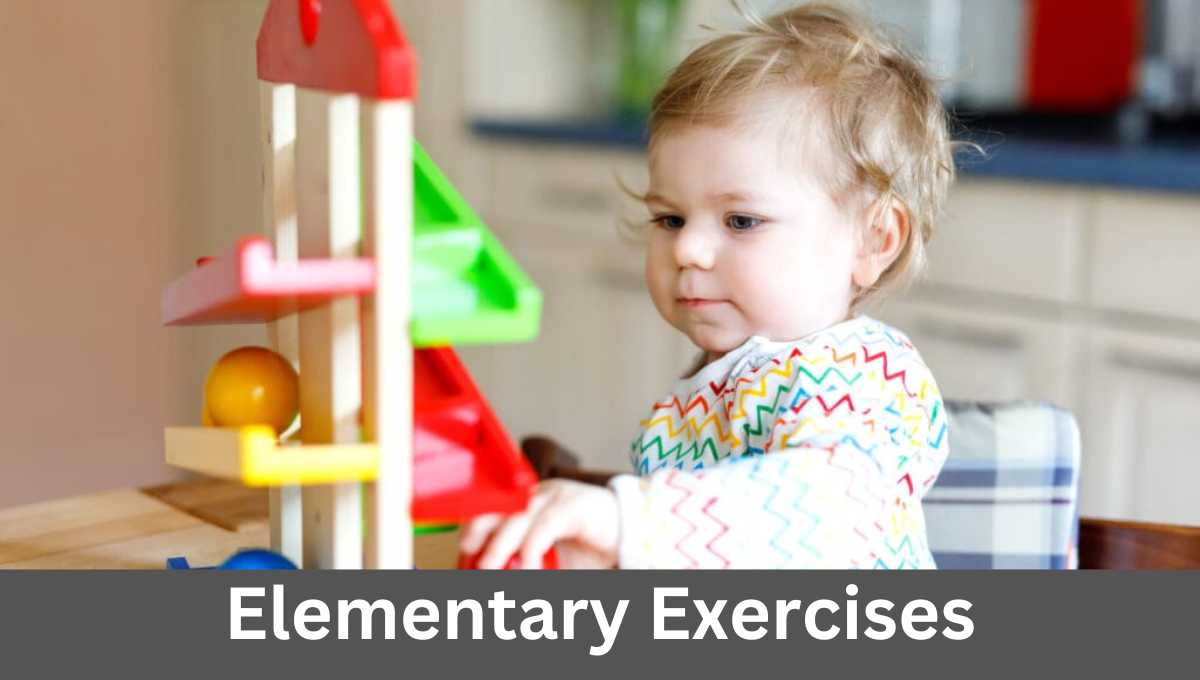
Elementary exercises are further sub-divided into three groups.
Basic Elementary Exercises
These activities involve very basic movement, mostly involving how to hold and place objects. These activities are completed within very short time.
For example,
- Holding a jug
- Holding a Tray
- Carrying a Glass of Water
- Holding a spoon
- Hanging an apron
- Selecting a Mat
Elementary Exercises
The movements involved in this category are a bit more complex and advanced than basic elementary exercises, but altogether they are also done within shot period of time.
Examples:
- Opening and closing Bottles Tops
- Rolling and Unrolling a Mat
- Threading Beads
- Folding and Unfolding a Mat
- Pegging
- Pouring Rice from one Jug to Another
- Pouring water from one Jug to Another
- Spooning Beans
- Turning Pages of a Book
Highly Elementary Exercises
Same sort of work is involved in these exercises, but they are more logical and slightly more complex than the previous group of exercises.
For Example:
- Sponging Water
- Pouring Rice to Multiple Containers
- Pouring Water to Multiple Containers
- Using a Dropper
- Use of Funnel
- Wringing a Wet Cloth
- Cutting Along a Line
Exercises of Personal Care
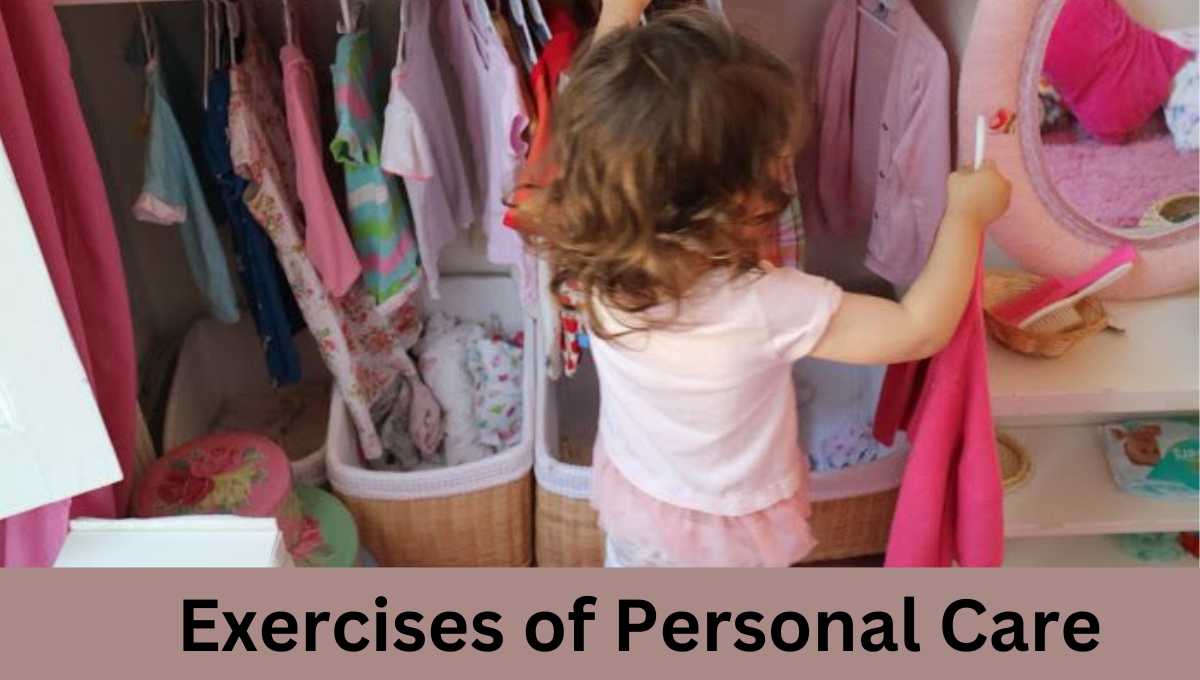
These exercises help the child to take care of himself, gain confidence, and groom himself.
Examples:
Grooming
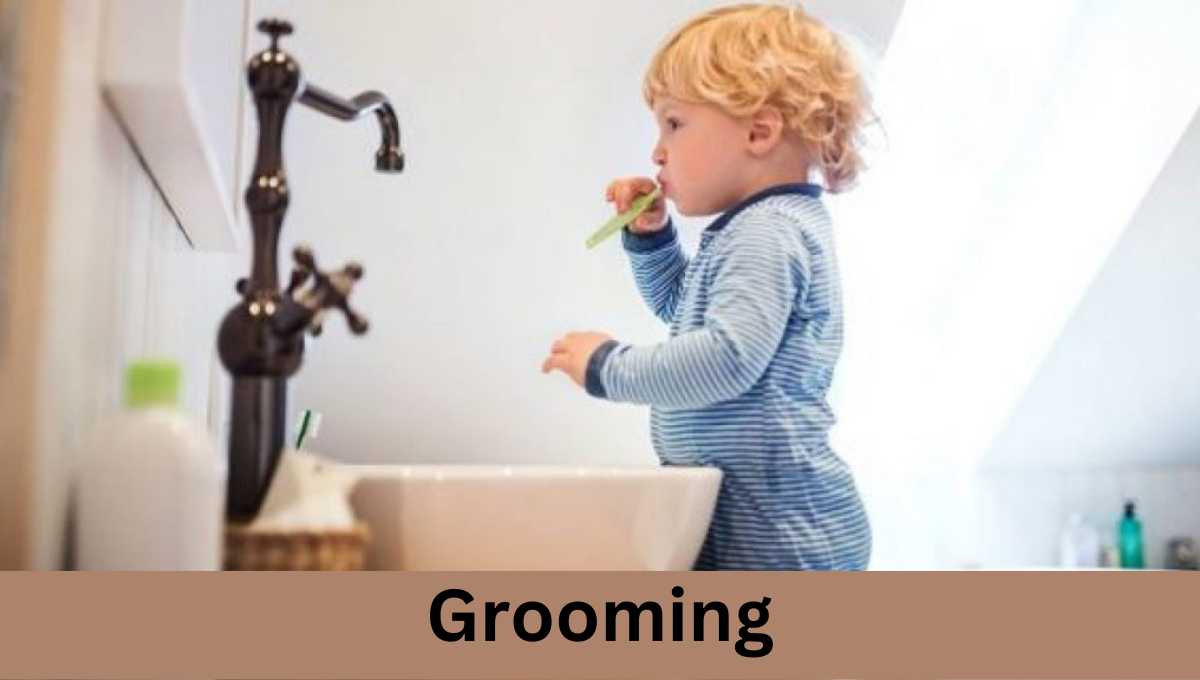
- Washing Hands
- Washing Face
- Blowing Nose
- Brushing Teeth
- Combing, Brushing, Braiding
- Care of Finger Nails
Dressing

- Button Frame
- Snapping Frame
- Hook and Eye Frame
- Buckle Frame
- Bow Tying Frame
- Shoe Lacing Frame
- Zipper Frame
- Safety Pin Frame
- Polishing Shoes
Preparing Food

- How to use Kitchen Tools
- Managing Containers
- Using a Grater
- Shaking a Bottle
- Preparing Vegetable
- Peeling Vegetables
- How to use a Blunt Knife
Exercises of Grace and Courtesy

Through these activities the child learns to be polite, use basic manners and how to go around the society.
Examples:
- Walking around a Mat
- Offering a pointed object/Knife
- How to sit on a chair
- Knocking at a Door
- Silence Game
- Walking on the Line
- Holding up, carrying and putting down a Chair
Exercises of Care of Environment
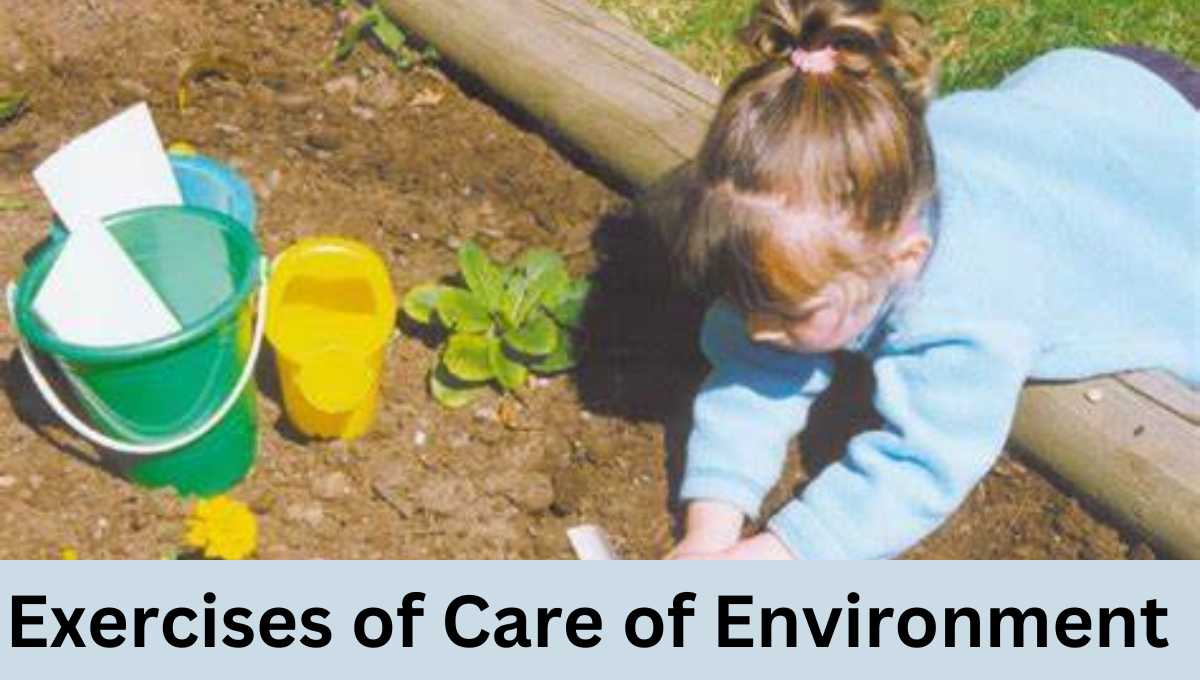
Exercises of both outdoor and indoor environments are components of this category. The child learns to take care of the environment, how to keep it clean and how to restore and maintain proper living conditions.
Examples:
Care of surface:
- Washing a Formica surface
- Washing a Painted Surface
- Mopping Floor
- Use of Broom and Dust Pan
- Care of Carpeted Area
- Polishing Furniture
- Sweeping
- Dusting
Care of Plants and Animals:
- Care of Indoor Plants
- The Garden
- Care of Animals
Sensorial Exercises
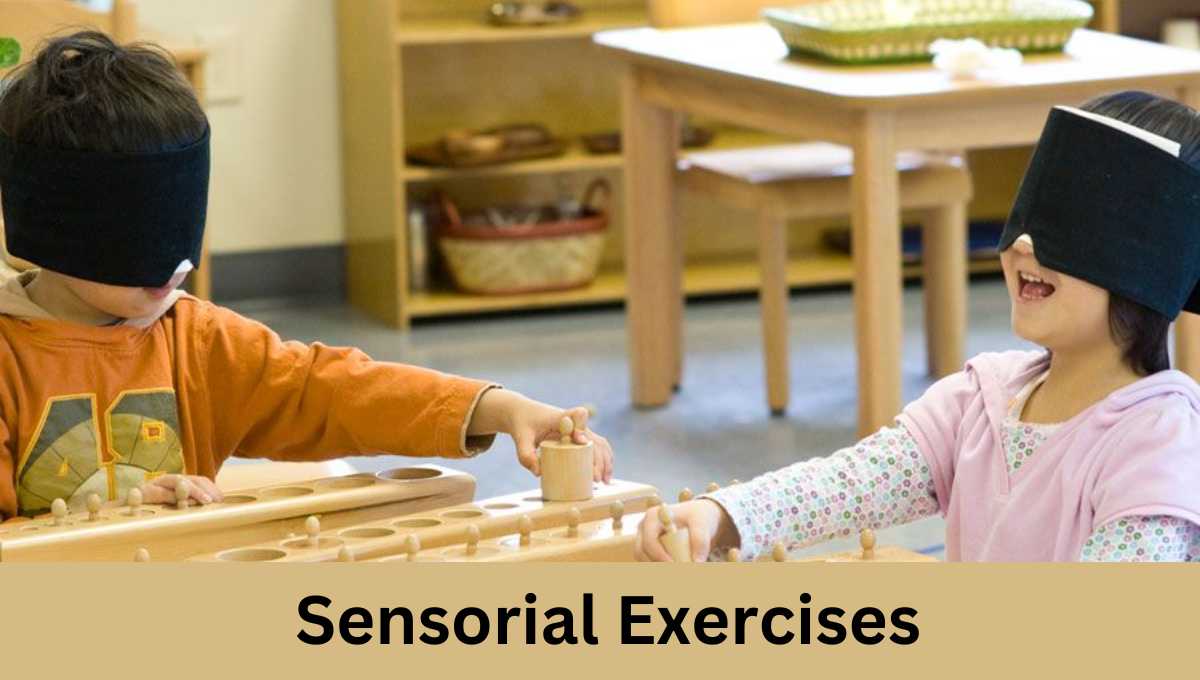
Sensorial activities are fun things children do to explore and understand their senses – like touch, sight, hearing, and more. Teachers place special materials and games in this learning center that help a child to learn about the world by using five senses.
For example, children might touch different textures, listen to various sounds, or look at different colors and shapes. These activities are like exciting games that make learning super interesting!
Benefits of Sensorial Activities:
Doing sensorial activities has some really cool benefits:
- Discovering the World: Children get to explore and understand the world using their senses, like how things feel, sound, or look.
- Improving Senses: These activities help make children’s senses stronger and more accurate. It’s like giving children’s senses a workout!
- Learning Skills: Children pick up important skills, like recognizing shapes, sizes, and colors, which are super helpful in everyday life.
- Problem-Solving: Sensorial activities make them think and figure things out, which is awesome for their brain.
- Having Fun: Most importantly, these activities are lots of fun! They make learning a big adventure, and who doesn’t love that?
Language
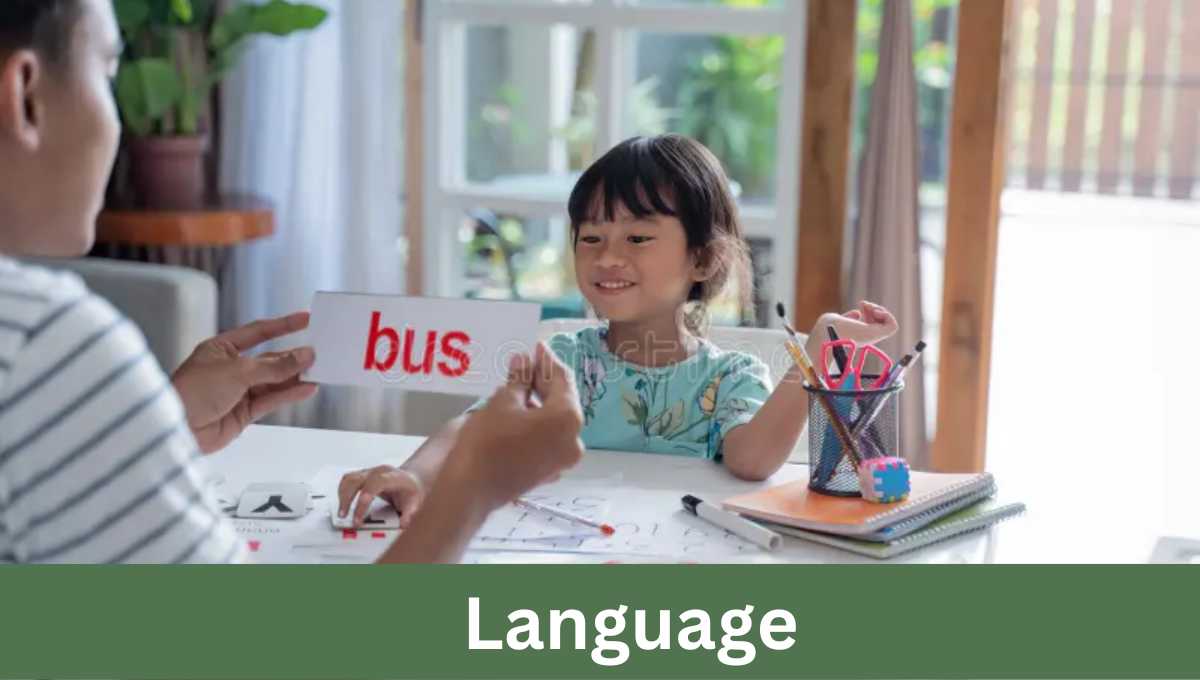
Language is explored phonetically in a Montessori classroom. Materials like sandpapers letters, and matching objects are used to introduce the initial alphabets and then introduce to blending exercises with the moveable alphabets. In Montessori, this learning center has super fun games that help them talk, read, and write better.
Talking Fun
- Children play games to learn new words and practice talking. It’s like chatting with friends while learning cool words.
Reading Adventures
- Children read exciting stories and play with letters. It’s like a journey into amazing worlds through books.
Writing Magic
- Children use special tools to write and draw. It’s like creating a magic with pens and paper.
Sounds Exploration
- Children have fun with sounds, making words and playing with letters. It’s like a musical way of learning words.
Language Games
- Children play games that help them understand words better. It’s like playing and learning at the same time.
So, in simple words, language exercises in Montessori are like awesome playtimes that help children become superstars at talking, reading, and writing!
Mathematics
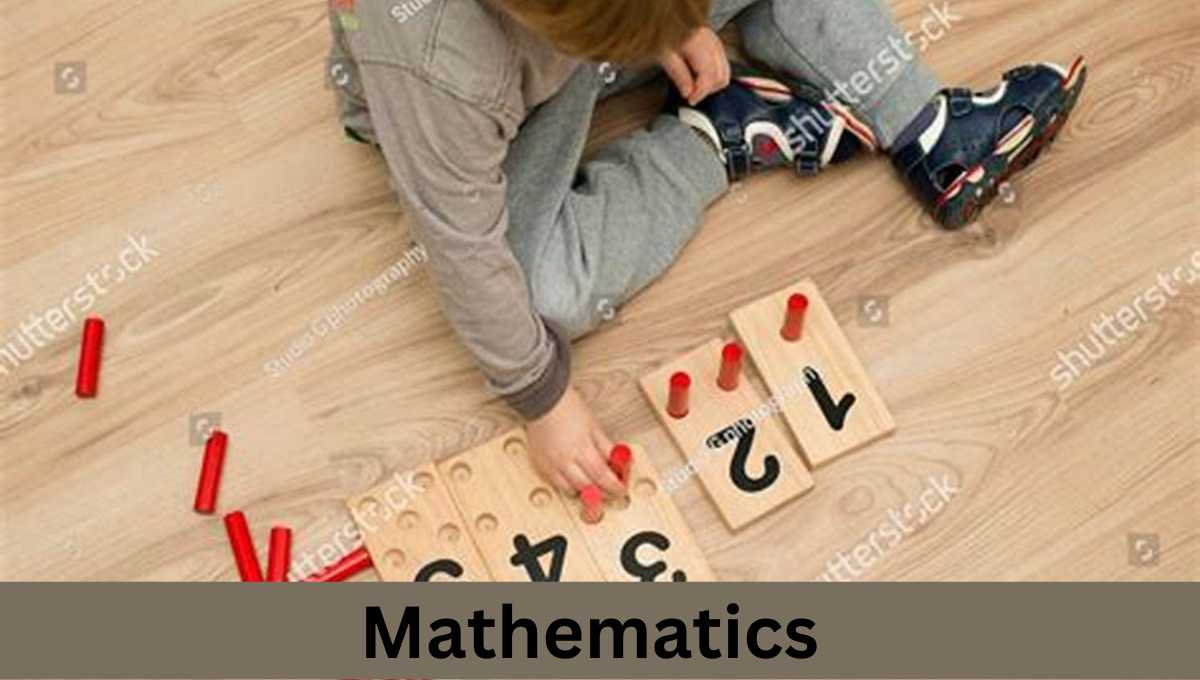
Hands on materials like number rods, sandpaper numbers, number boards, number beads, tiles and games are used to teach mathematical concepts.
In Montessori, this learning center has exciting games that makes numbers and counting super fun. Let’s break it down:
Number Rods and Spindle Box
Children play with numbers like they’re our friends. Children learn numbers according to their quantity through number rods. Teachers introduce “0” through spindle box.
Sandpapers Letters

- Children identify the numbers and learn how to write numbers through sand papers.
Golden Beads Materials and Number Cards
- Golden Bead materials and small and number cards are used for the concept of place value. This material is very helpful and children learn place value without any confusion and enjoy the learning process.
Adding and Subtracting Fun
- Children learn to add and subtract with games. It’s like solving puzzles that make math super easy.
Shape Play
- Children explore different shapes like circles, squares, and triangles. It’s like a shape party where they learn about shapes while having a blast. There is a wooden shape cabinet which has different drawers having different wooden frames and students hold a shape and fix it in appropriate frame.
Solid Shapes
Teacher gives idea of 3D shapes by using solid shapes. This material makes this concept easy and understandable for students.
So, in simple words, math activities in Montessori are like awesome games that help children become superheroes at counting, adding, subtracting, and understanding shapes!
Cultural Area
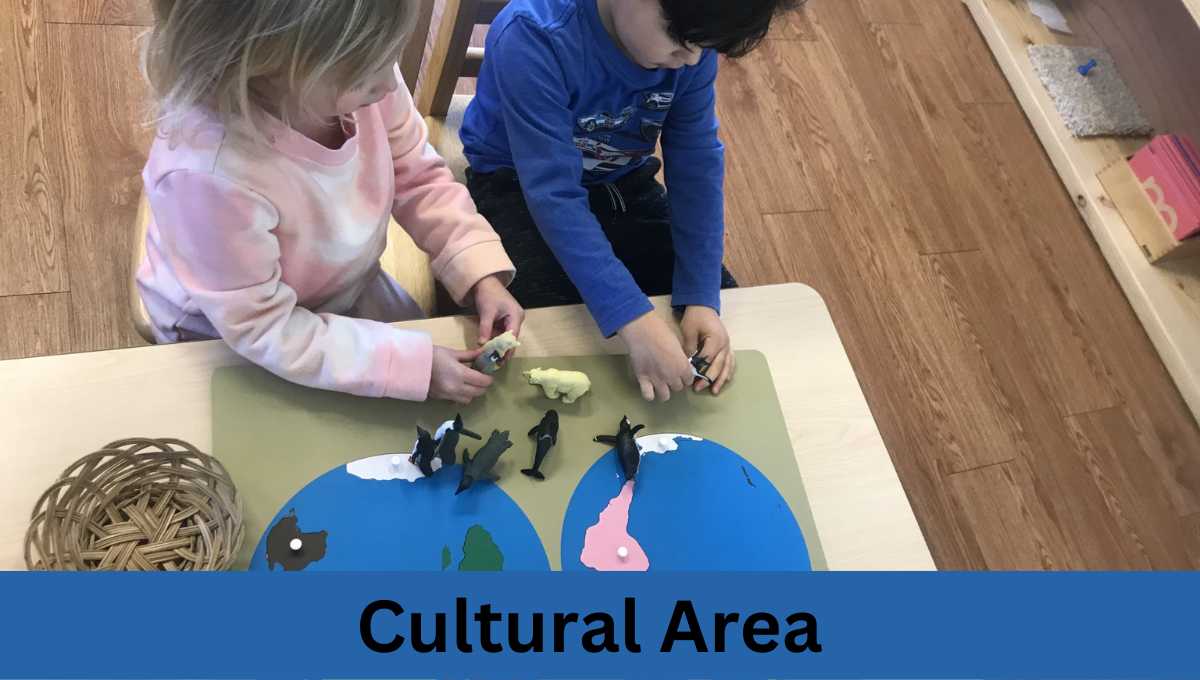
During early years the child is quick to grasp culture. He absorbs most of the culture around him during 0 to 6 years. In Montessori classrooms the cultural activities are very intelligently incorporated in the environment.
This learning center is divided into geography, history, science, and nature. Each of the concepts is taught with materials used in a classroom or activities that will develop their sense regarding their concepts.
Geography Quests
- Children go on quests to discover countries, continents, and maps. It’s like being a little explorer, finding out about different places on their planet.
History Time
- Children travel back in time to learn about the past. It’s like having a time machine that takes them to ancient civilizations and exciting historical events.
Science Adventures
- Children do experiments and learn about plants, animals, and the world. It’s like being a scientist and uncovering the mysteries of nature.
Art and Music Journeys
- Children explore art and music from different cultures. It’s like having a global art gallery and a concert from around the world right in their classroom.
Language and Customs
- Children learn about different languages and traditions. It’s like having friends from all over, understanding how they speak and celebrate.
So, in simple words, cultural exercises in Montessori are like amazing journeys that help children to understand and appreciate the rich diversity of the world.
